Designer(s) John Salwitz Cabinet Upright | Initial release date 1990 | |
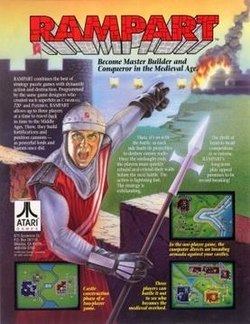 | ||
Mode(s) Up to three players simultaneously Display Raster, standard resolution (Used: 336 x 240) (Horizontal)25 inch (three trackballs)/19 inch (two joysticks) Similar Tengen games, Puzzle video games | ||
Rampart is an arcade game, released in 1990 by Atari Games, that combines the shoot 'em up and puzzle genres.
Contents
- Overview
- Gameplay
- Place Cannons
- Prepare for Battle
- Build and Repair
- Multiplayer
- Strategy
- Ports
- Legacy
- References
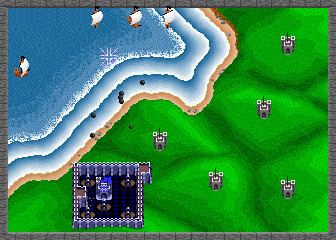
Overview
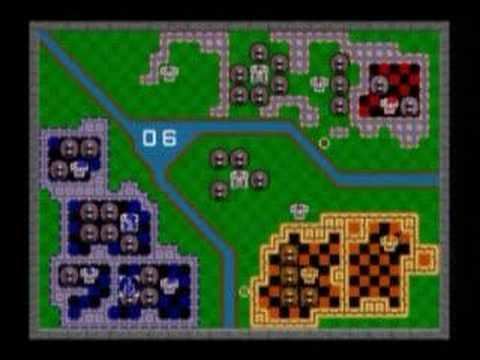
In Rampart, the player is in control of a set of castles, which they must defend, by alternately shooting at attacking ships (or other players), and repairing any damage done to them within a time limit. Surrounding this castle is a wall, made up of small blocks, completely surrounding a region of the board. This area is considered the player's territory, and it may contain one or more castles, and any number of cannons. The maintenance of this territory is the primary focus of the game. Once the player defeats the opponent, the player can execute the commander, by walking the plank or beheading. Music by: Jas C. Brooke, Mark Cooksey
Gameplay
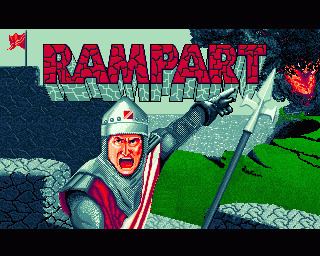
The single-player game consists of six levels. The ultimate aim is to destroy a fleet of attacking ships while repairing any damage the fort sustains.
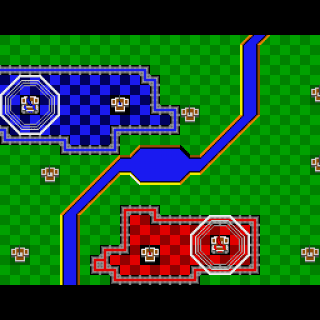
At the start of each level, the player chooses the location of their fort from a number of options. This location is then surrounded by a wall to form a castle, which the player can then place cannons within. After this, an attacking round commences, followed by a repair round, where any damage to the castle must be repaired. If the player manages to survive the repair phase (by surrounding at least one castle within a time limit), he is given a short amount of time to place additional cannons within the walls of his fort (if he made room for them), after which the battle resumes.
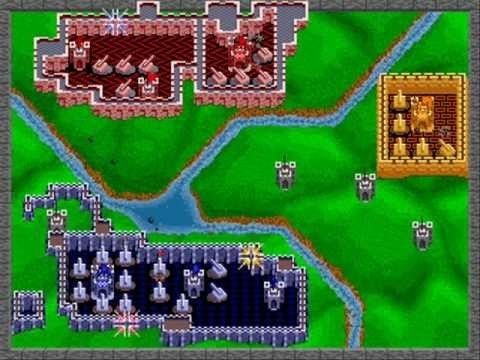
This cycle continues until either the player fails a repair round, or enough ships in the enemy's fleet are sunk. When the opposing navy has been sufficiently depleted, the level is won, and the player may then choose another level from the island map.
Place Cannons
After starting a new game or after a successful repair round, the player may gain extra cannons (the number depending on the number of castles captured) to be placed in their territory.
In the SNES and PC versions only, the cannons gained can also be converted into powerups:
Prepare for Battle
In an attacking round, the player and enemy ships fire at each other using their respective cannons. The player can sink the enemy ships, while the enemy can destroy parts of the player's perimeter. Enemy ships move around while they fire, making it necessary to lead your target like in Missile Command.
Ships come in three types:
Later levels feature "dark" versions of each of these ships, which are each capable of taking one additional hit before sinking.
Build and Repair
In the repair round, the player must repair the damage done to the wall surrounding his territory. They are presented with a random series of polyomino shapes, and must place them on the island within a time limit to keep their castles surrounded by walls. While superficially similar to Tetris shapes, these pieces have much greater variety, ranging from 1 by 1 squares that can fit almost anywhere to big plus and U-shapes. The pieces do not fall, but may be moved freely around the screen and placed in any spot that does not overlap something already on the board (walls, water, castles, cannons, grunts, craters, or the edge of the board).
At the start of the Repair phase, all the territory that is so damaged that there is no longer a complete, unbroken wall around it is lost. By placing wall pieces, the player attempts to "capture" territory by completing a wall around it. Before the timer expires, the player must have completed a wall around at least one castle (which may or may not be his original, "home" castle) or he loses. It is also advantageous to capture previously-placed cannons, as only cannons within the player’s territory may be used in the subsequent battle phase.
Multiplayer
When playing with two or three players the game is similar, except that instead of fighting against enemy ships, the players each have their own area of land separated by a river, and they shoot at each other’s walls. In multiplayer mode, cannons can be destroyed if they take enough hits, there are bonus squares that are worth extra points when captured, and there are no grunts or craters, but the game is otherwise similar.
Players shoot at each other’s walls during the Battle phase and try to make it difficult for them to survive the next repair round. If a player is unable to repair his wall, he must insert another credit to remain in the game, but cannot do so more than three times. The last player remaining is the winner. If all the players remain in the game for an operator-adjustable number of rounds, they engage in a "Final Battle" at the start of the last combat phase, and if there isn’t a clear winner at the end of the following repair phase, the winner is determined based on score.
Strategy
Within Rampart each element of the game interacts with the others in subtle ways. It is generally easier to capture an unowned castle than repair the wall around a starting castle, but without the benefit of the home castle’s cannons the player will have a tough time. Building close to the water will allow the player better aim, and to get more shots off during battle (each cannon may only have one cannonball in the air at once), but enemy ships will also get more shots and castles close to the water are more vulnerable to grunts. Building more cannons gives the player more shots in battle, but once placed cannons cannot be removed, and too many cannons can make it almost impossible to survive a repair phase. These tradeoffs give Rampart its charm but also make the game difficult to master.
Ports
Rampart has been ported to the SNES, Sega Master System, Mega Drive/Genesis, Atari Lynx, PC, Macintosh, Commodore 64, Amiga and Atari ST platforms, separate versions for Game Boy and Game Boy Color, and also separate versions for the Nintendo Entertainment System and the Famicom. MegaTech gave the Mega Drive version 90% and a Hyper Game Award, saying that it was a "superb blend of different game styles".
The arcade version of Rampart is also included in the Midway Arcade Treasures compilation, available for the Nintendo GameCube, PlayStation 2, Xbox and PlayStation Portable consoles, and the Midway Arcade Origins compilation, available for the PlayStation 3 and Xbox 360. It was also included with Gauntlet on the Game Boy Advance.
Most of the home versions of Rampart change the game in non-trivial ways. The Japanese (NES) Famicom version, which was released by Konami, includes 7 training levels and 3 difficulty settings. It also features an extensive multiplayer mode for two people. Many options can be chosen, such as the number of cannons to start with and so on.
There are also several open-source games based on the gameplay of Rampart, such as Kajaani Kombat and Castle Combat.
A PlayStation 3 port was released on the PlayStation Network on May 10, 2007. This download is no longer available for purchase. Although it is mostly identical to the arcade version, it also supports internet multiplayer play.
Games based on Rampart are also available for iOS devices, such as Hostile Tides.
Legacy
Rampart influenced the first tower defense games around a decade later. Gameplay similarities include defending a territory by erecting defensive structures, and making repairs between multiple rounds of attacks.
